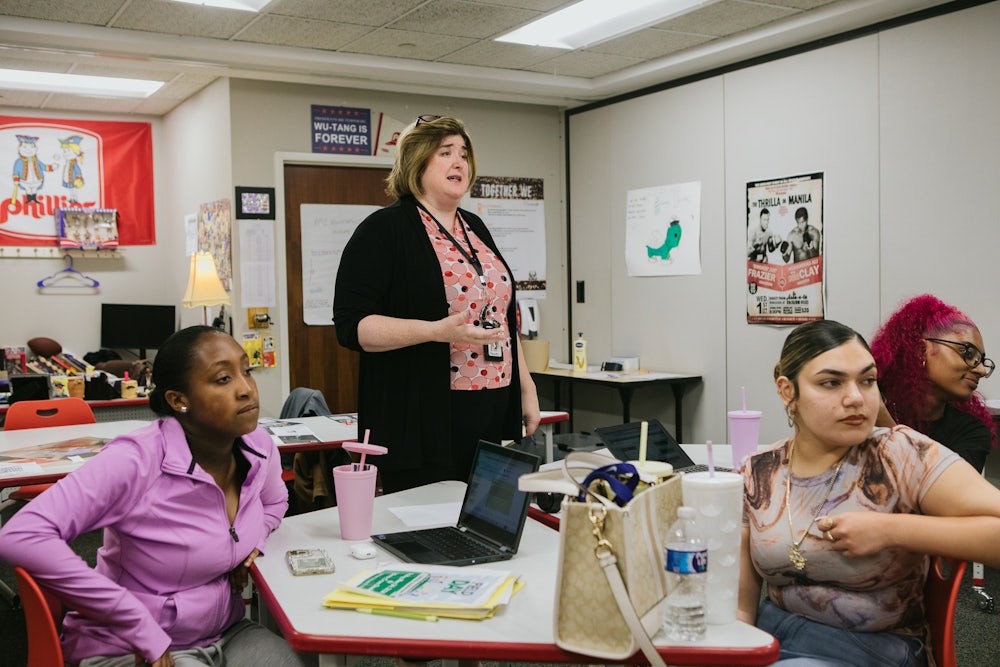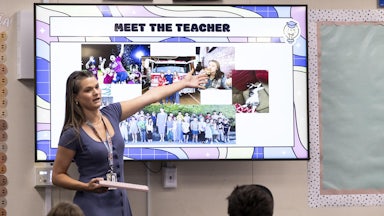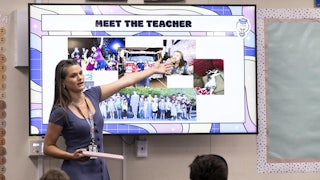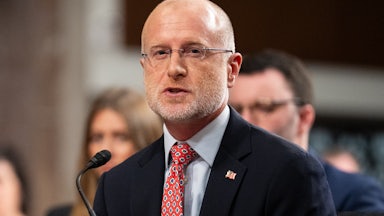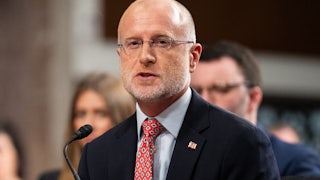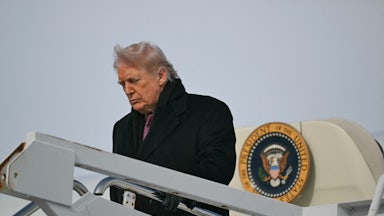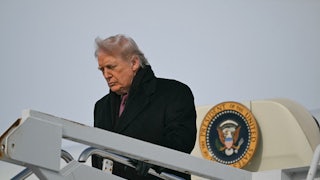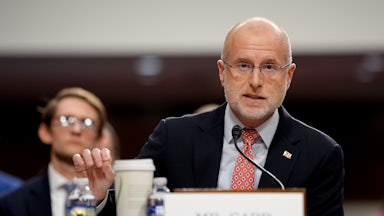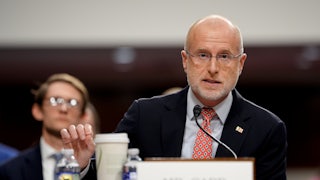Whoever actually wrote President Donald Trump’s recent executive order on education, “Ending Radical Indoctrination in K-12 Schooling,” holds an apocalyptic view of the American classroom. The order claims that teachers are “imprinting anti-American, subversive, harmful, and false ideologies on our Nation’s children.” I spent the 2023–2024 school year in social studies and government classrooms across the country while preparing a book on civic education, and I can say two things for sure: One, conservatives really do believe that; and two, it’s not true.
Virtually all of the dozens of teachers I met during the course of my research regard viewpoint neutrality in the classroom as a sacred obligation. A history instructor at a high school in exurban Chicago told me that he could never forget getting a C- from a college professor who objected to his defense of the USA Patriot Act of 2001. That, he said, was why he never revealed his party affiliation to his own students. “I tell the students,” he said, “that I hope they can come to know their own viewpoint and the views of others.” I saw very few Black Lives Matters banners in classrooms, but a great many portraits of the Founders and even of Republican presidents.
Why, then, do conservatives hold this hyperpolemicized view of American schools? First, few of them have actually set foot inside them. In the course of a lengthy email exchange with me, Stanley Kurtz, one of the leading crusaders against all things woke and the author of a highly influential model statute titled the Partisanship Out of Civics Act, acknowledged that he had never visited a classroom. Nevertheless, he said, the liberal bias of teachers ensured that apparently neutral exercises in “action civics” would serve as a pretext for left-wing indoctrination. Those teachers, he guessed, had kept their politics under wraps when I had visited.
Yet conservatives aren’t simply making this stuff up. You cannot read the academic literature on pedagogy, official statements from educational administrators, or social studies standards in blue states without recognizing the pervasive influence of identitarian thinking. Minnesota, for example, places ethnic studies on a par with history, geography, government, and civics as the constituent fields of social studies. One of the ethnic studies standards for kindergarten asks children to “describe how individuals and communities have fought for freedom and liberation against systemic and coordinated exercises of power locally and globally.” This for 5-year-olds.
The Trump executive order targets “discriminatory equity ideology,” and I suppose that I saw just that belief system at work in a Minneapolis high school where the principal instructed staff members to ensure that white and non-white students were getting equal fractions of good and bad grades. What was striking, however, was that every member of her leadership team who spoke up disagreed with her. “It’s a good goal,” one teacher rejoined. “I would like everyone to get an A. It’s not a good statement of reality.”
So yes, even though teachers police their classrooms for signs of partisanship far more rigorously than conservatives recognize, in our intensely polarized culture blue states will implicitly, and sometimes explicitly, transmit a progressive view of American history and government, and red states a conservative one. One would wish for a single narrative in which all Americans could find a place, but our tradition of locally controlled schools means that each district and state will reflect its larger political culture.
The Trump executive order does not respect that tradition. The president plans to withhold federal funding from schools that do not offer a “patriotic education” that celebrates America’s “greatness and history” or accept that “the United States has admirably grown closer to its noble principles throughout its history.”
In that new dispensation, students would not come to know their own viewpoint and that of others; they would learn that one viewpoint is right and others are wrong. Some history teachers ask students to read both a left-wing text like Howard Zinn’s A People’s History of the United States and a conservative one such as Larry Schweikart’s A Patriot’s History of the United States. Under the terms of the executive order, they could teach only the latter.
Trump has a text that he wishes teachers to work from. His executive order reconstitutes the 1776 Commission, an advisory committee he had established at the very end of his first term and which in early 2021 published a document called The 1776 Report. The report, written largely by scholars at Hillsdale College, a key node in the conservative academic network, engages in precisely the form of indoctrination that conservatives accuse liberals of perpetrating. The authors palliate the horrors of American slavery by noting that the practice had been “more the rule than the exception,” and characterizing the Founders as secret abolitionists; they compare progressivism to communism and fascism as an ideology of state control founded on a distrust of the citizen. The report concludes, without the slightest hint of irony, by admonishing states to “reject any curriculum that promotes one-sided partisan opinions, activist propaganda or factional ideologies.”
We may take some comfort in the fact that the tradition of local control will prevent the president from running roughshod over the schools as he plans to do over so many other spheres of our national life. Trump may not be able to bully schools into whitewashing American history, but the executive order represents a terrible missed opportunity. Schools are not failing in their civic role because teachers are in thrall to a woke ideology; they are failing because so few students have the linguistic skills or the background knowledge needed to make sense of the Constitution or the speeches of Frederick Douglass. Everything else, by comparison, is chaff.
Our furious red-blue culture war does matter, chiefly because teachers are terrified of falling afoul of intensely politicized parents—or sometimes students—and so avoid anything difficult or controversial. That’s a very serious problem. But the greatest impediment to the kind of civic education that would help students become engaged and reflective citizens is pedagogical: Few of our schools give children the foundation in knowledge and language that will allow them to read and make sense of challenging texts. The real crisis of our schools is that, as the most recent results from the National Assessment of Educational Progress revealed, two-fifths of fourth graders read at a “below basic” level.
Here, in fact, conservatives do have something to offer. There is a strong argument that a more traditional pedagogy based on the acquisition of knowledge and an exposure to challenging texts is much more effective at building critical thinking and other core skills than is a progressive pedagogy that scants knowledge and chooses texts based on their personal relevance to students. But pedagogical conservatism, or traditionalism, has nothing to do with the radical assault on the culture that Trump is now mounting. Requiring teachers to force-feed patriotism to their students won’t make America greater; it will make us angrier and stupider.
